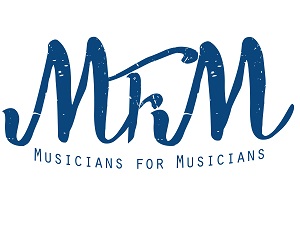MFM ‘s 2nd ZOOM Webinar: “Effective Ways to Market and Promote Your Music in 2020.”
Report by Dawoud Kringle

Adam Reifsteck (photo by Roger Blanc)
On Thursday, September 17, 2020, MFM, in cooperation with the Manhattan Producers Alliance (MPA), presented its 2nd Zoom Webinar: Effective Ways to Market and Promote Your Music in 2020. The webinar was co-hosted by MFM member and co-producer / host of the MFM Speaks Out podcast Adam Reifsteck, founder of Teknofonic Recordings, and Jeffrey James, founder of Jeffrey James Consulting.
The purpose of the webinar was to discuss music publicity and promotion, building a fan base, promoting one’s music and how to craft the perfect pitch to improve your chances at getting reviewed and your music noticed in today’s digital landscape.
The first topic discussed was the difference between promotion / public relations, and marketing. In a nutshell, marketing focuses on market trends and revenues. It monitors the evolution of market trends and the varying behavior of target consumers, and makes sure advertising collaterals are in place. It conducts marketing campaigns based on factors such as behavior, age, gender, income, etc. among consumers. Its successful return on investments is immediate.
Public relations, on the other hand, focuses on brand awareness. Its role is to create awareness about your brand and build a relationship among target groups; the audience, media, and community influencers, for the purpose of promoting and maintaining brand awareness. It is an organized action, the objective of which is to initiate media attention and multimedia coverage. Unlike marketing, this is a time consuming process; its effects are not immediate.
Reifsteck mentioned that the ideal is to make these two processes work in concert. He also pointed out that he, as a label owner, concentrates on marketing, whereas the artist management must concentrate more on PR.
James offered some practical PR strategies. The first thing he discussed was the importance of a properly worded

Jeffrey James (photo courtesy of Jeffrey James)
press release. Most will tout how great they are (“not to be missed”). Most editors don’t care about this; they only care if something is happening. He used a press release as an example of how to present this information: the first paragraph concentrates on what is happening (in James’ example, it was a piano recital), and the info on what, where, when, links (with contact information at the top and bottom of the press release), etc. He also shared a PDF listing from Carnegie Hall with useful contacts to send the press release; and suggested registering with Musical America (https://www.musicalamerica.com/).
The question arose of the advantages and disadvantages of hiring a PR firm. The advantages are that a PR firm has the ability to deliver brand awareness to places an independent artist may not be able to reach or influence. The main disadvantage is that it is costly.
This also brought up the inescapable fact that the markets for different genres work differently. What works for the jazz market, for example, does not work for the classical market.
The subject of posting on online calendars was discussed next. Again, this is process is dependent upon the genre / target market.
Inevitably, the pandemic was brought up; specifically how to initiate the process of PR in the midst of the pandemic. James pointed out that the PR work he’s been doing of late is informed by the restrictions of the pandemic, specifically for online events. He said that people are more open to charging for online events; something that hadn’t happened much before the pandemic.
This was followed by some discussion of how mechanical royalties should be paid for online events, and how services such as FaceBook Live would respond to someone playing copyrighted material.
James made an interesting statement. He’s often asked if an artist should do this, that, or the other. His reply is “All of the above.” Every tool at one’s disposal should be exploited to its fullest. There was also some lengthy discussion on emails getting lost, physical press releases verses emails, and how to draw attention to ones email. James said that good programming was an effective way to draw favorable attention to oneself. It’s important to pay attention to how you write the press release, and to what you are offering. Repeated quality product is essential to establishing good relationships.
James mentioned his use of the Constant Contact newsletter service (www.constantcontact.com). He prefers it to others such as mailchimp.com.
The group dialogue veered back to how to draw attention to yourself in a crowded market. Reifsteck shared how, after a bad experience with an incompetent PR firm, he decided to go the DIY. His strategy was to not making it about him at all. He’d make it about the person he’s reaching out to. This was successful. He also found that interacting with these people on social media was helpful.
An interesting observation was brought up by Roger Blanc regarding the pre-pandemic classical music world. Smaller ensembles became more predominant, largely due to factors of funding. The New York State Council of the Arts and other organizations had said that whatever funding an applicant got pre-pandemic could be applied to online events.
Ken Hatfield brought up a question. A musical entrepreneur / label owner whose work is dependent upon live / acoustic musicians must deal with media that, unlike other genres, does not accept digital submissions (this is mostly in the jazz world. The classical world sometimes accepts digital submissions). He asked how does one monetize a digital submission and recoup one’s investment. How does one differentiate marketing for gigs from marketing for recordings? James replied that speaking for the classical world, digital submissions are becoming more acceptable, for the very reason of convenience and financial expediency.
Reifsteck pointed out something else of interest. As a label owner, he noticed that good reviews and publicity does not necessarily translate into CD sales. He believes that this is because PR and marketing are two different things. He emphasized the importance of having an overall strategy for both. He then outlined the process of what he called “Fan Value Journey.” This is a marketing process that draws a customer base that translates to sales. This begins with Awareness (potential fans discover you), then to Engage (potential fans read about you, engage in social media, watch videos, etc.), then Subscribe (getting people to opt into gated content, newsletter lists, free downloads, etc), then Convert (fans make small purchases). The next step is Excite; where people get actual value form your music. This is followed by Upsells, where they ascend to purchasing more music, merchandise, etc. The next step is Advocate: Fans mention you in reviews, word of mouth, social media posts, etc. The final stage is Promote, where they actively promote your music. He also brought up the idea of the Sales Funnel; a model that describes the process of condensing one’s market and weeding out those who will not buy from you.
The information in this webinar is very useful and valuable to the musical entrepreneur. It is also one of the obvious benefits of membership in MFM, and a service offered to the musical community.

